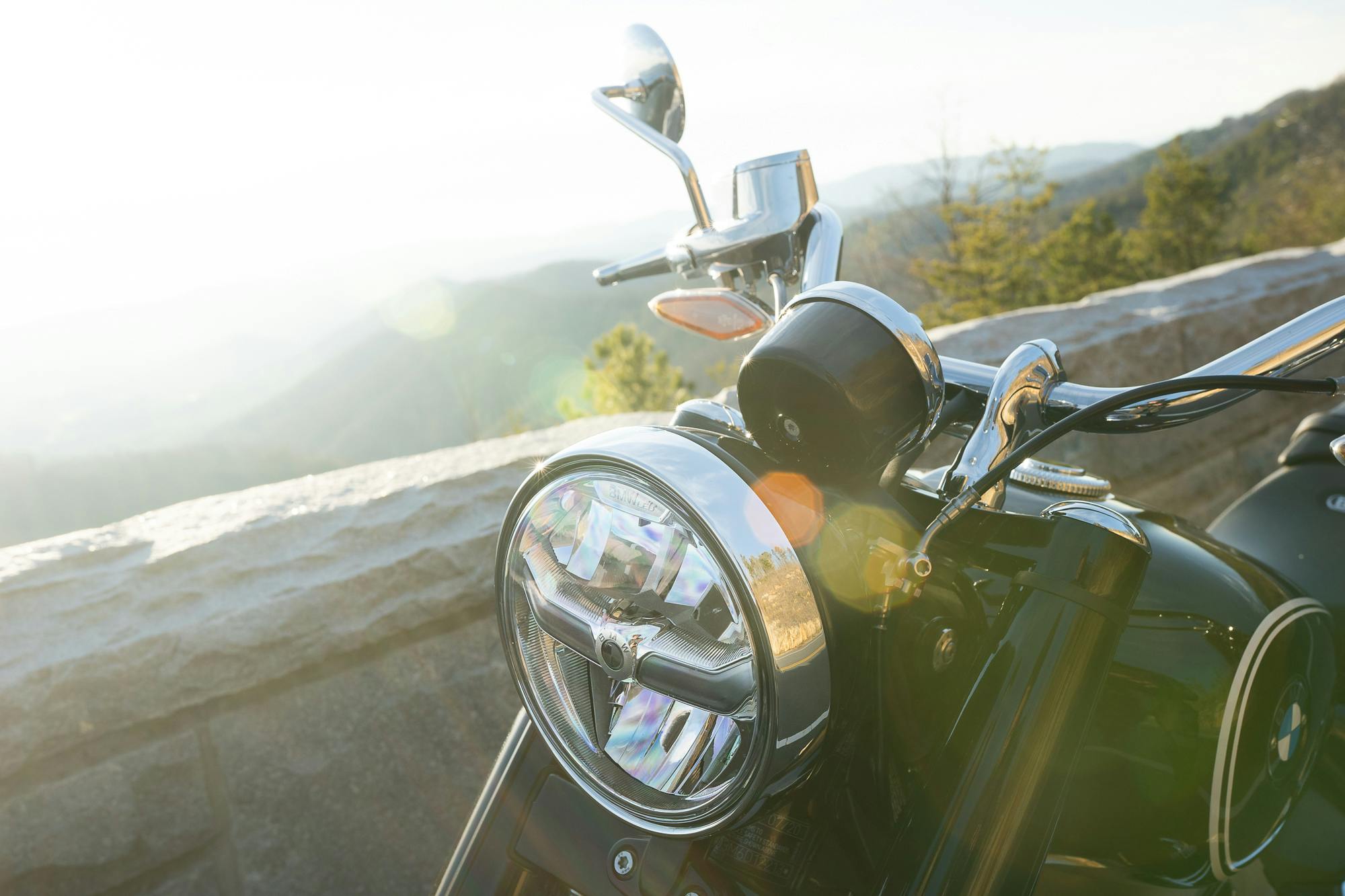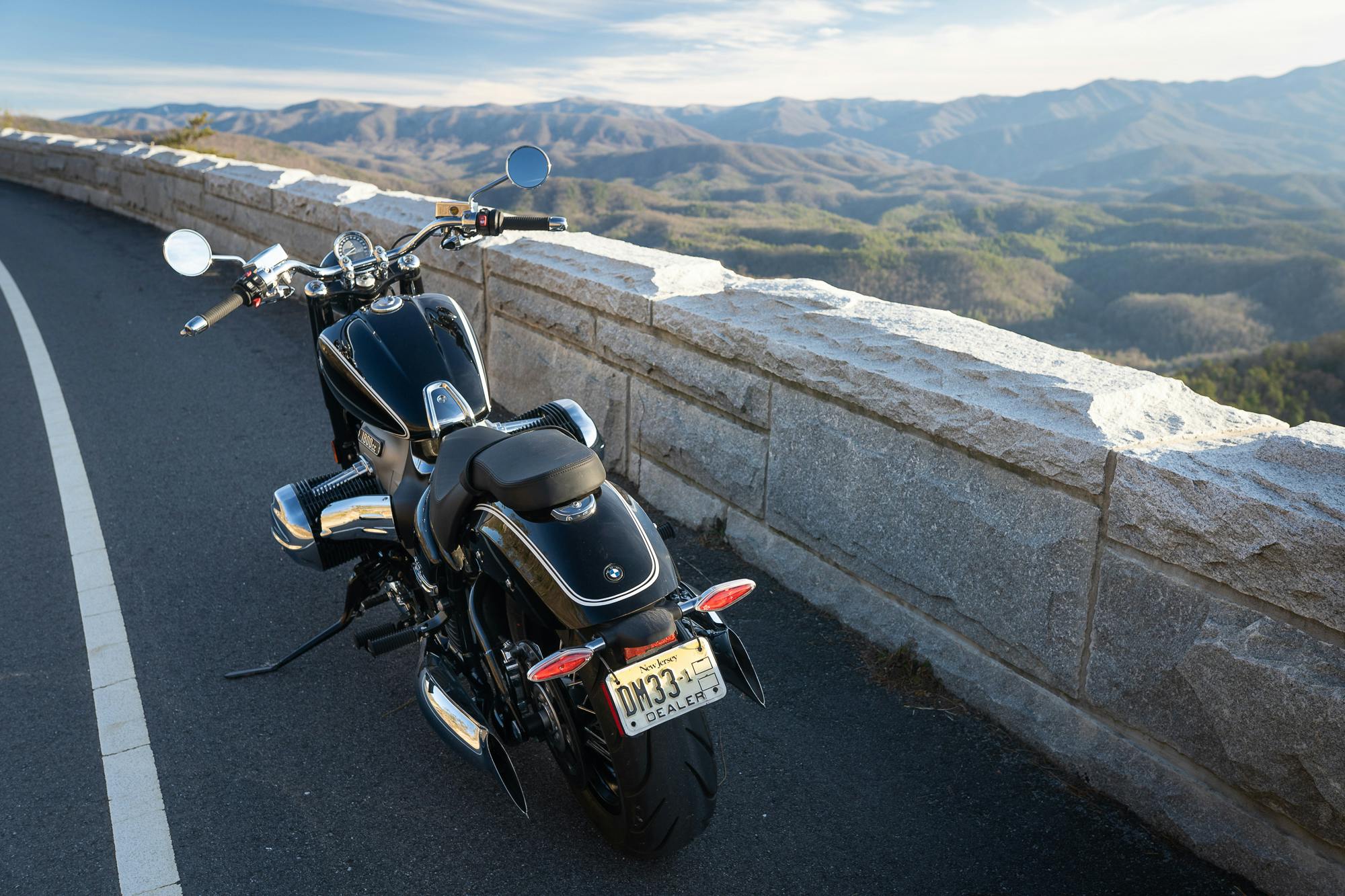Review: 2021 BMW R18 First Edition – Hagerty Media
The Toyota minivan stopped in the lane, parking parallel to the bike. Florida plates on a Tennessee scenic parkway. The older man at the wheel, bearded and smiling, stuck out an arm in a friendly little half-wave.
“How you like your 1800?”
You test cars and bikes for a living, you get this a lot. Most people want the CliffsNotes. I set my camera down.
“It’s nice! Rides alright for the size, seems really well-built.”
“Far out. Big, though.” He sucked his teeth a little.
“Well, weight’s like a big Harley, and it’s about the same size. Engine makes it look bigger than it is, I think.”
A head tilt. “Especially for a BMW.”
I was about to ask what he meant by that, but in the passenger seat, his wife smiled that weary smile that says We should get moving. He shrugged and waved again. The van rolled forward about ten feet before stopping abruptly, holding at the bike’s front tire.
“Far out,” came a voice, softly, from the front seat. Then, just as the brake lights went out again: “Big.”
***
You get that a lot.
This is not a large machine, at least by the standards of its breed. The shock is rooted mostly in origin. At 790 pounds wet, the R18 is the heaviest production BMW motorcycle in history, and the one most outside company norm. The 1802-cc, four-valve, fuel-injected twin under its tank and between your legs is the largest boxer in the firm’s 98 years. No European bike seems to try quite as hard to look old-school American. No European bike makes such an effort to visually hide its independent rear suspension. For that matter, no other European motorcycle has a frame that looks as much like a Harley-Davidson Softail.
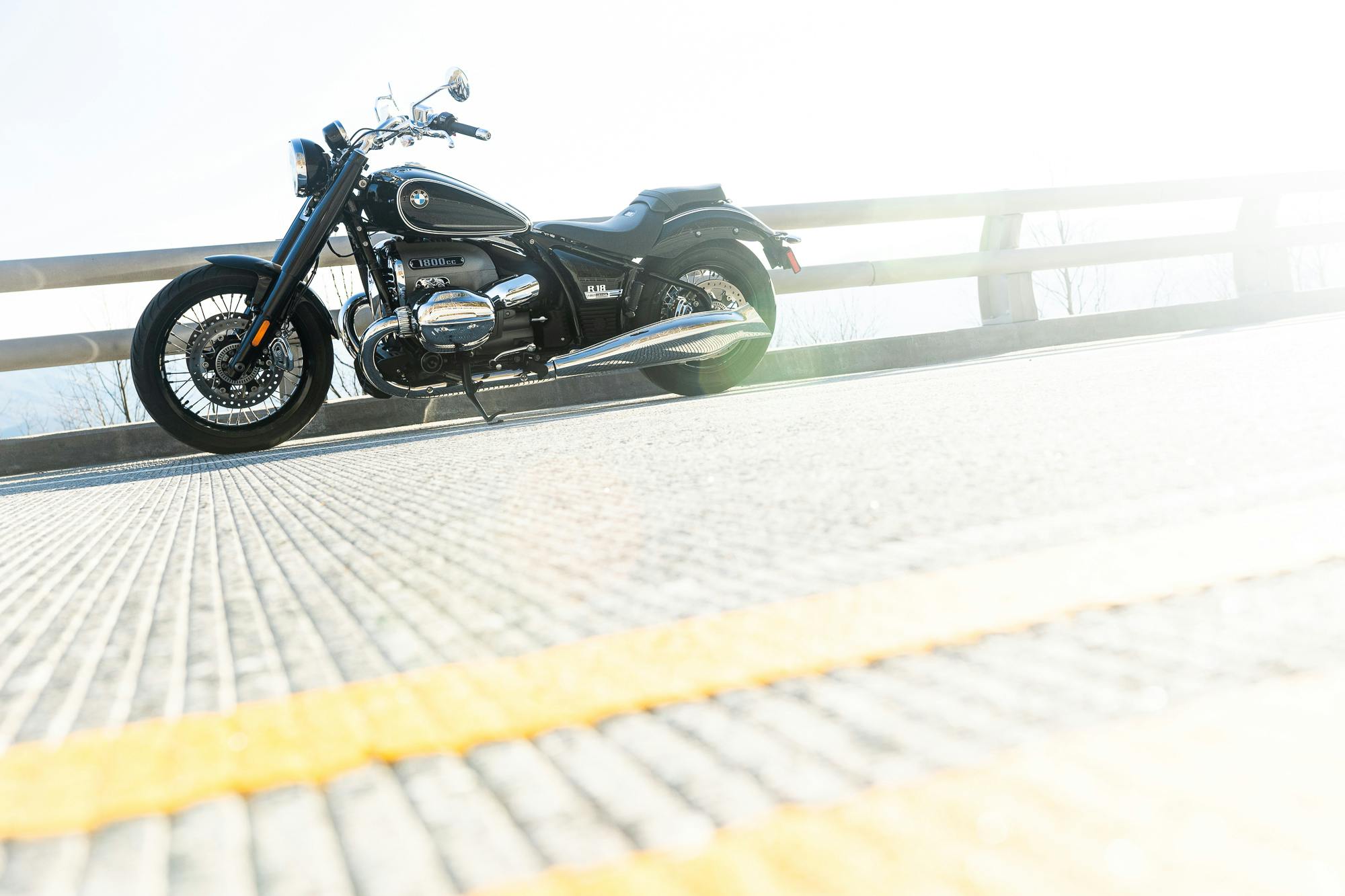
The motorcycle division of the Bavarian Motor Works has not once built what most Americans would call a cruiser. You buy a bike in that category because you like relaxing Sunday rides and chromey hot-rod juju. Maybe you enjoy open-air road trips made of low-stress glide-thump. You are drawn to machines that can dispatch whole states in comfort.
Like a hot rod, the cruiser is a distinctly American creation. These machines are simple to build and easy to mock but hard to get right. BMW tried to enter this market once, in the late 1990s, with the cartoonish R1200C. (That last letter meant what you think.) The design was rooted in something like admiration—Europe is Harley-Davidson’s second-largest market—but next to a Harley, the thing looked like a propeller beanie. Sales were predictable.
Harley comparisons are cruiser currency because the Milwaukee company essentially invented the form. Even today, the brand sells more such motorcycles globally than anyone else. BMW says the 2021 R18 First Edition is an homage to the German firm’s 1930s efforts. This gets you a hand-pinstriped tuxedo livery and an exposed driveshaft, but also that horizontally opposed twin. These people have been building engines in this fashion since 1923.

The end result isn’t unattractive, but for better or worse, it’s also an obviously calculated shot, the sort of thing a Bavarian might sketch up over a few borrowed Wisconsin CAD files and a large case of beer. If the bike has an aesthetic weak spot, it’s in the odd blend of confident, almost shocking quality and self-conscious detail yelling. From the R18’s seat, you see that deliciously organic striping and a few beautiful castings, but also three printings of the try-hard “Berlin Built” catchphrase. A quick walkaround will show exactly 13 uses of the BMW logo or wordmark in just eight linear feet of bike. The electroless nickel plating on the driveshaft is golden and deep; a few feet away, the chrome brake lever looks like a plasticky truck-stop reject.
The irony is, there’s real heritage here, nothing to oversell or be insecure about. Prewar BMW motorcycles were mile-eaters with jewel-like finish. None of them turned or stopped very well, even by period standards, but they ran forever in an era when most bikes didn’t, and people loved them.
Sound familiar?
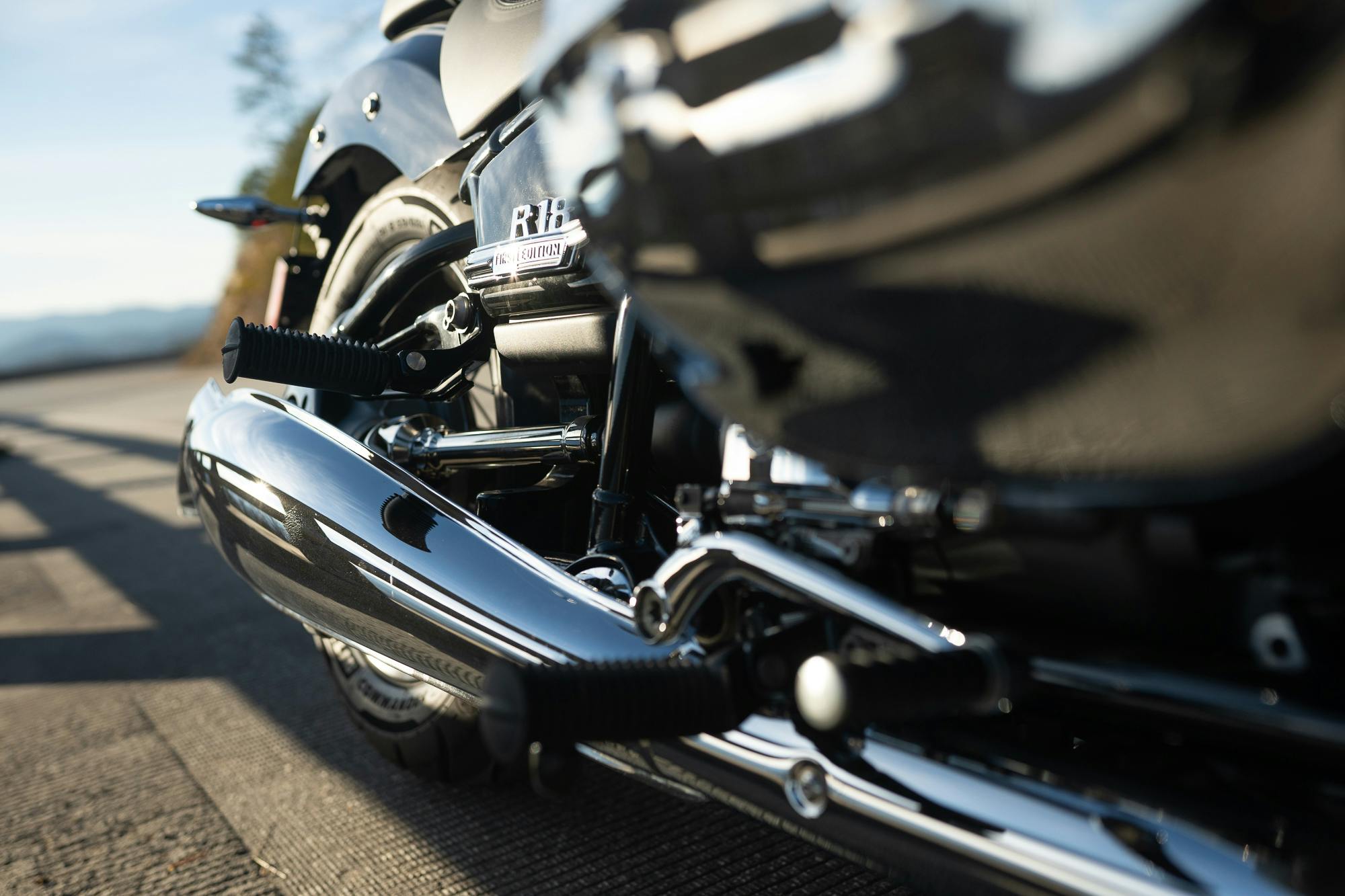
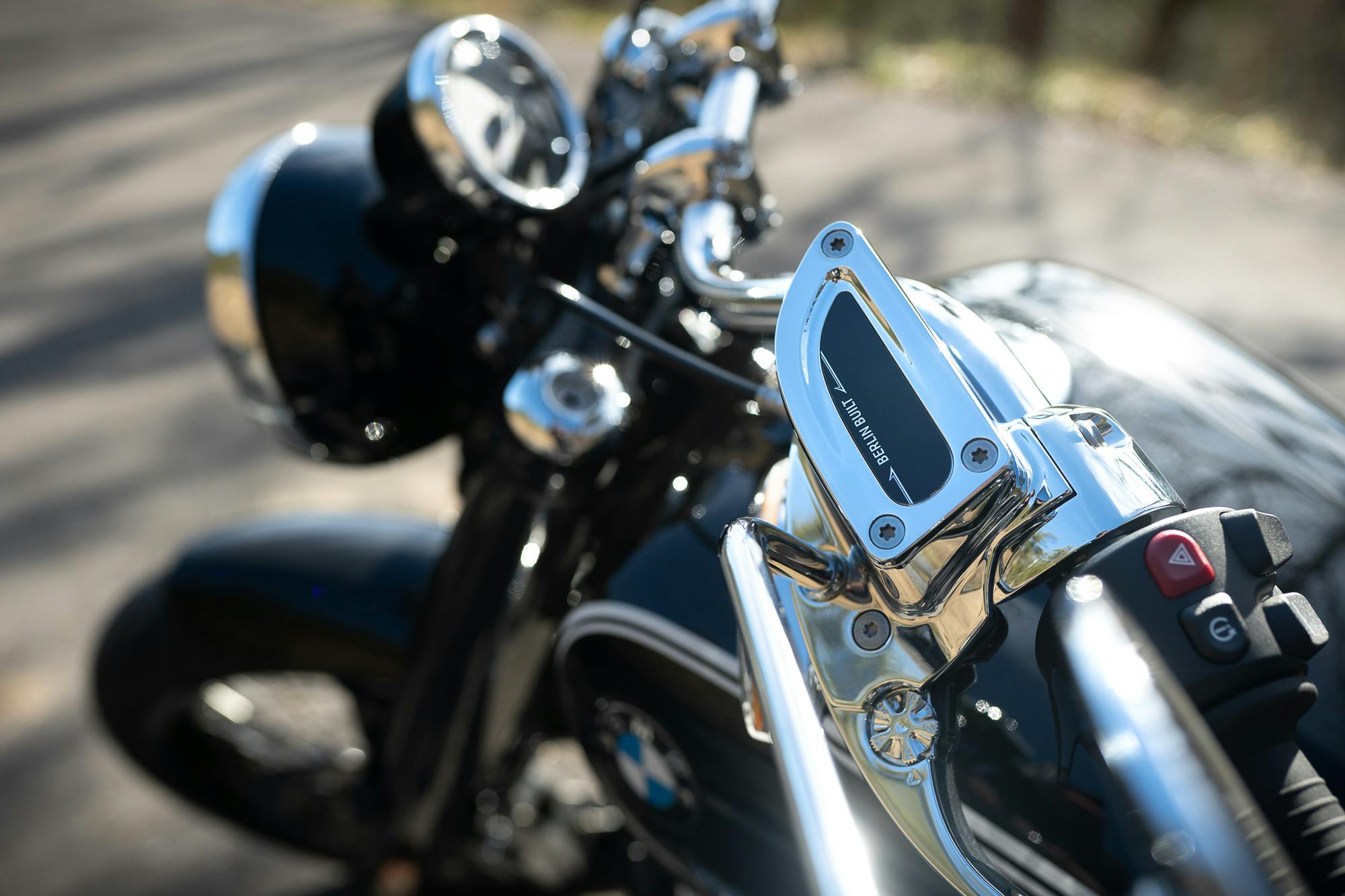
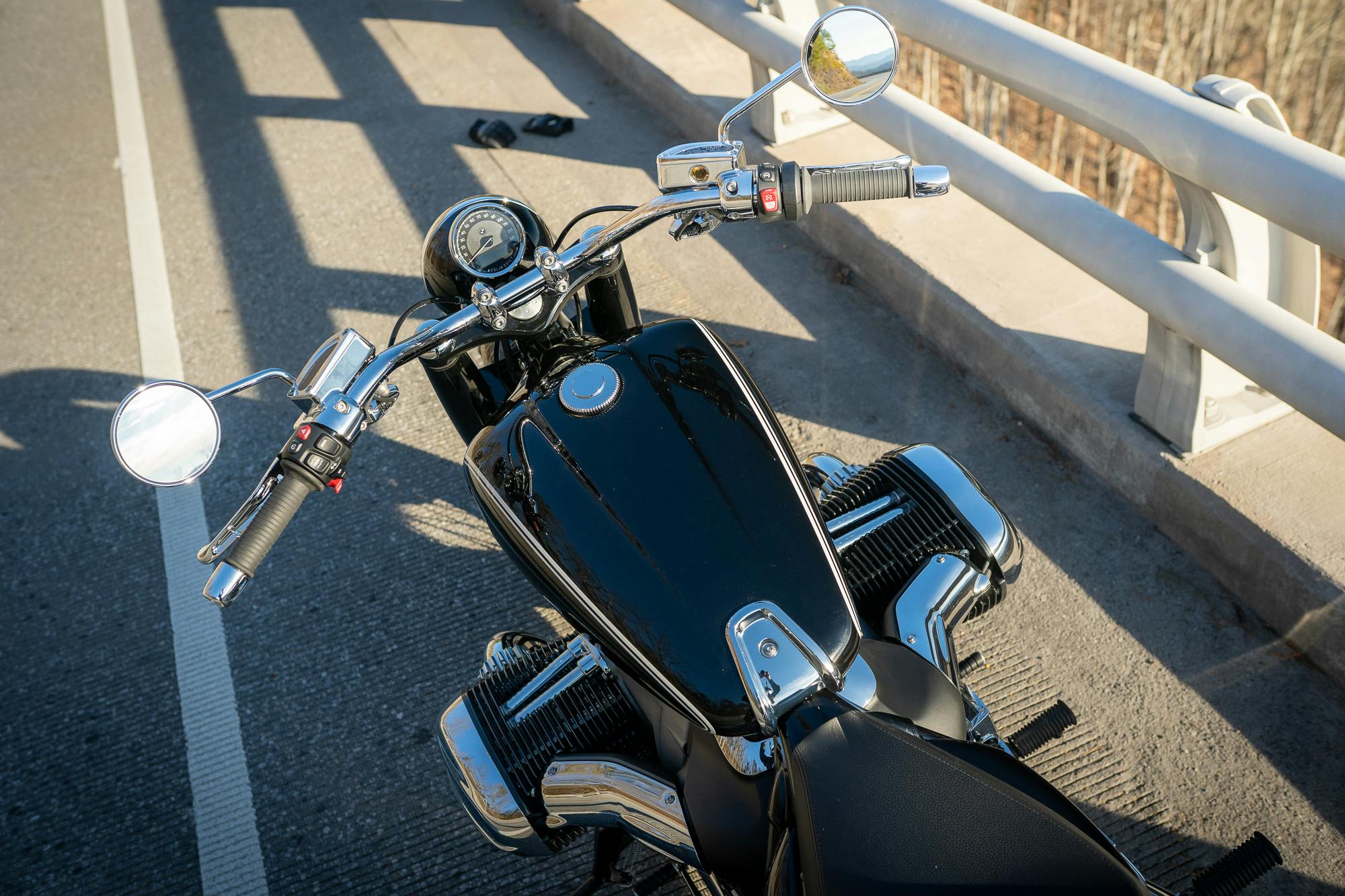
American references are handy perspective. The R18’s coffee-can pistons, hung out by your shins like a pair of tame Howitzers, ride in bores one millimeter larger than those of a 426 Hemi. The BMW’s stroke is almost five millimeters longer than that of the Chrysler motor. According to the chassis dyno at Cycle World, the German bike produces 81 hp at 4800 rpm and a healthy 103 lb-ft of torque at 2880.
Who else makes torquey, anachronistic twins? Back to Harley-Davidson for a moment. That company’s Milwaukee-Eight 114, another four-valver, uses 1870 cc to produce 82 hp and 111 lb-ft of torque. Like the R18, it redlines at 5500 rpm. The Harley’s pistons are smaller, but the 114’s stroke is longer by more than an inch and a half.
The geometry difference hints at the philosophical one: Harley engines are traditionally long-stroke wallop machines, all slappy torque and midrange. The German motor offers similar power delivery, but its gruffness occasionally feels like a hat on a hat. The R18’s idle lope can sound a bit artificial, and high rpm gives unhappy vibration. (The bike’s engineers intentionally omitted a balance shaft here, for character.) There’s also a tingling bar-seat-spine vibration from 3500 to 4500 rpm so annoying, you find yourself purposely shifting around it.

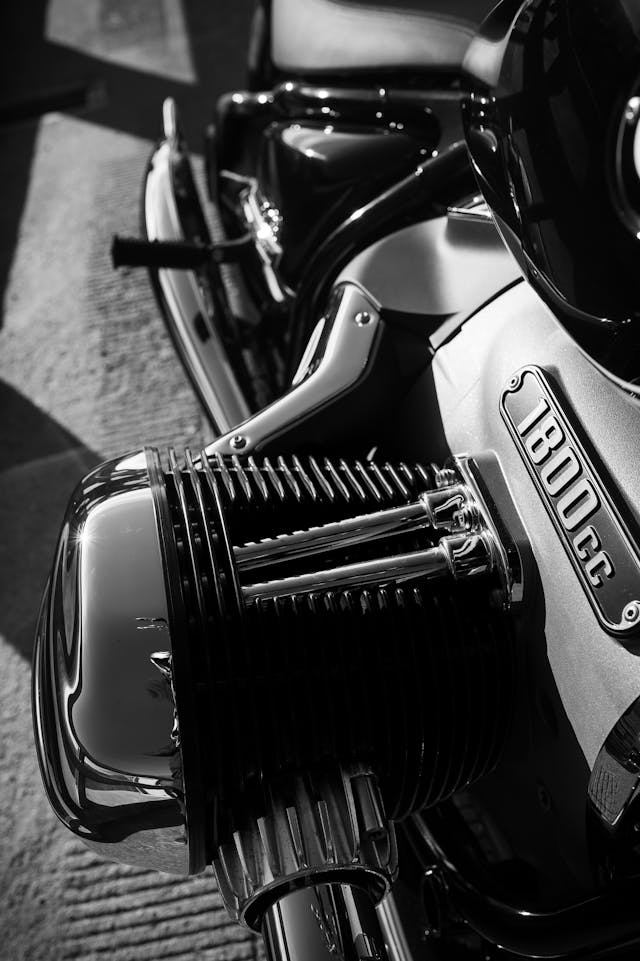
Fine, sure, you say: Vibrate is what a cruiser does! But if you want to join a club, should you have to leave part of yourself behind? Harley engines are charmingly rough around the edges, but BMW engineers have been addicted to refinement and rpm since the Ottoman Empire was intact. The R18 does the Harley-rpm trick, which is to say, you find the rev limiter once and think, That’s enough of that. A definite sense of strain lives up there, incentive and power less so.
For a bike of this genre, these aren’t negatives. They’re more moments of pause, where expectation—cruiser versus BMW versus BMW cruiser—misaligns with reality. Thankfully, the sum package is a sorted and pleasant little freight train. The torque on tap always feels adequate, aided by immaculate fueling, and the while the R18 isn’t blazingly fast, it’s far from slow. For all those huge pistons suggest, the engine is less asphalt-melter and more chill old soul, which fits the cosmetics. Those neat little fishtail pipes produce a soft basso thrumble, like the growl of an old biplane, that initially seems dull but quickly turns comforting. The six-speed gearbox is a slick delight, balking only on cold downshifts and aided by a single-plate dry clutch with a slipper. Three separate traction/drive modes offer increasingly aggressive throttle response and slip (Rain, Roll, and Rock, in that order). Those chrome Brembo calipers require a surprising amount of lever effort but feel idiot-proof as result.

Cruisers tend to slow life down, and this one is no exception. An R18 is an easy bike to ride but takes physical work to hustle, wanting light bar effort and heavy intent, but if you don’t want to work, that’s okay, because the bike’s architecture makes most speeds feel fast, or at least fast enough. You won’t go very far without stopping, because the 4.2-gallon fuel tank gives a bankable range of just over 100 miles before reserve, but that’s fine, too, because your knees are probably a bit sore; those cylinders place your shins a bit too far back for the stock seat.
The pegs drag early in corners. The tank can be slow to fill. To care is to miss the point. At 70 mph, an R18 feels unstoppable, like surfing an asphalt sea. This is what you get when you do this blueprint even half right, and the R18 is far more than half right.

Unpleasant reality one: Harley-Davidson sales, like motorcycle sales in general, have been in a gentle decline for years, and no amount of clever marketing or *THE**HARLEY**OF**THE**FUTURE* has yet turned the tide.
Unpleasant reality two: In the past 20 years, no one save Indian has managed to dent Harley’s dominance of the cruiser market, to the point where everyone else has basically given up trying.
And our challenger greets the scene.

Industry folk often view motorcycles as attainable supercars, impractical toys purchased entirely on emotion. When someone wants an Italian exotic, for example, they don’t leave the Ferrari store and head for the nearest Ford GT, even if the Ford is better for their needs. Same goes for bikes. At the root of this is the pull of brand identity, the intangible result of doing things a certain way for years, the power of consistency and intent. With the R18, BMW is attempting a lane change, attempting to port success from one arena into another.
Lane changes are dicey things in any industry, but they rarely fail because of product. They fail because someone in a conference room misunderstands how people are willing to perceive a brand. When they succeed, it’s usually due to commitment, killer timing, and a healthy dose of luck.
This is a good bike. Even a good cruiser. It’s priced decently for the market, it rides well, it looks great, and it’s genuinely fun at any speed. Any flaws are either forgivable or charming. The real question isn’t whether the Bavarians can crack the cruiser code; they have. It’s whether anyone in the market will care.
2021 BMW R18 First Edition
Base price/as-tested: $17,495 / $19,870 (First Edition model only)
Highs: Looks the business, shrinks distance, a steamroller in a tuxedo.
Lows: Can be a bit cramped if you’re taller than average. One-hundred-mile range before reserve.
Summary: The best cruiser to come out of Europe, and a fun alternative to the usual suspects—assuming you want a cruiser that comes out of Europe.

